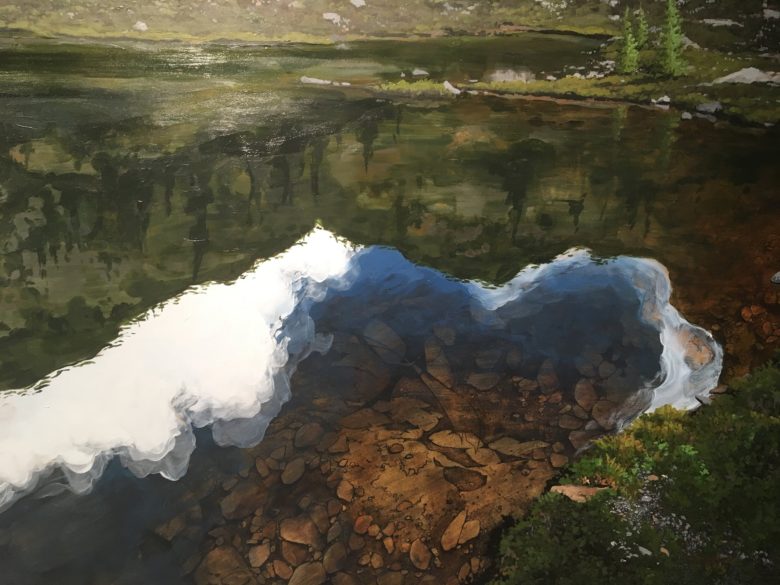The art of art collection
September 2018
 By Rose Weagant
By Rose Weagant
“We buy what we like, what we can afford, and what will fit into our apartment.”
These were the rules established by some of the most prolific art collectors in New York, Herb and Dorothy Vogel. The Vogel amassed a collection of nearly 5,000 works of minimalist and conceptual art worth millions.
They themselves weren’t millionaires. Herb worked for the Post Office and Dorothy was a librarian. They simply loved art and saw what Herb noted as “more than average potential” in emerging artists. Because of these collectors, rent was paid, art supplies were replenished, careers were made.
It doesn’t take a fortune to collect. It takes and eye and a willingness to engage with artists.
(Artwork, After the Storm by Tori Karpenko.)
The path to art collection doesn’t begin with art literacy–that’s the destination. Most people begin to collect art when they find a piece that speaks to them. Art collector Penelope Varn said, “I prefer the odd or “ugly” pieces that elicit an uncomfortable visceral reaction from the average viewer but a smirk of secret appreciation from me — those that feel like a sliver of my psyche sandwiched between microscope slides.”
“Art fills the gap between the depth of human emotion and the inadequacy of words. It spreads another dimension throughout my personal space,” said Methow Valley art collector Karla Seibe.
Art collection is the natural progression toward art curation, and can change your home from a place where you live to a gallery of works that define your own personal human experience.
“I collect art because it’s a win-win,” said collector and Confluence Board Chair Gary Ford. “Artists, who can make beautiful, joy-producing work out of materials in the physical world—something I am incapable of doing get supported and encouraged to make more and I get a home filled with joy.”
Collectors have the power to contribute to the success of emerging artists. Many of the artists the Vogels collected eventually became well known, and I dare say that it was because of the the support from patrons that they went on to develop as artists. “When an artist becomes famous, we shared their joy and sort of became a part of it,” Dorothy said in the 2009 documentary, Herb and Dorothy.
The curation of a legacy.
”There’s no excitement in the world like the excitement of owning an original work of art,’ said macabre acter and art enthusiast Vincent Price. His vast collection of works was presented to East Los Angeles College along with funds to build the Vincent Price Art Museum. Now we can’t all be Vincent Prices, but the opportunity to create a legacy through art collection through works donation.
The Vogel Collection was donated to the National Gallery of Art because the gallery met their requirements: The gallery does not sell their collections, nor does it charge admission. Through the National Gallery of Art, the Voegels created a national donation program called “Fifty Works for Fifty States,” where the couple gave 50 pieces of art to museums or galleries in each state–Seattle Art Museum being the recipient for Washington state.
Whether you collect 2 or two hundred artists, the work of the collector is a thrilling experience when you become a part of an artists’ process, furthering their work and passion through your own enthusiasm for art. You both celebrate the art as well as the artist. As a simple act, it remains significant to any artist along the way.